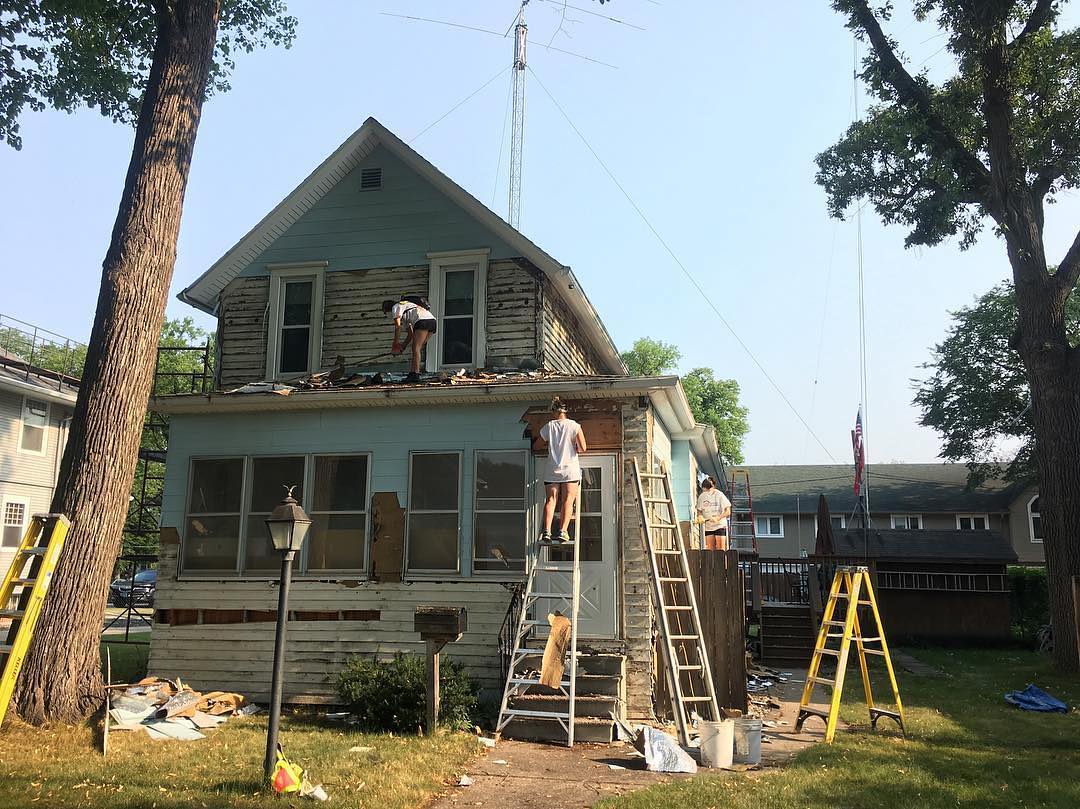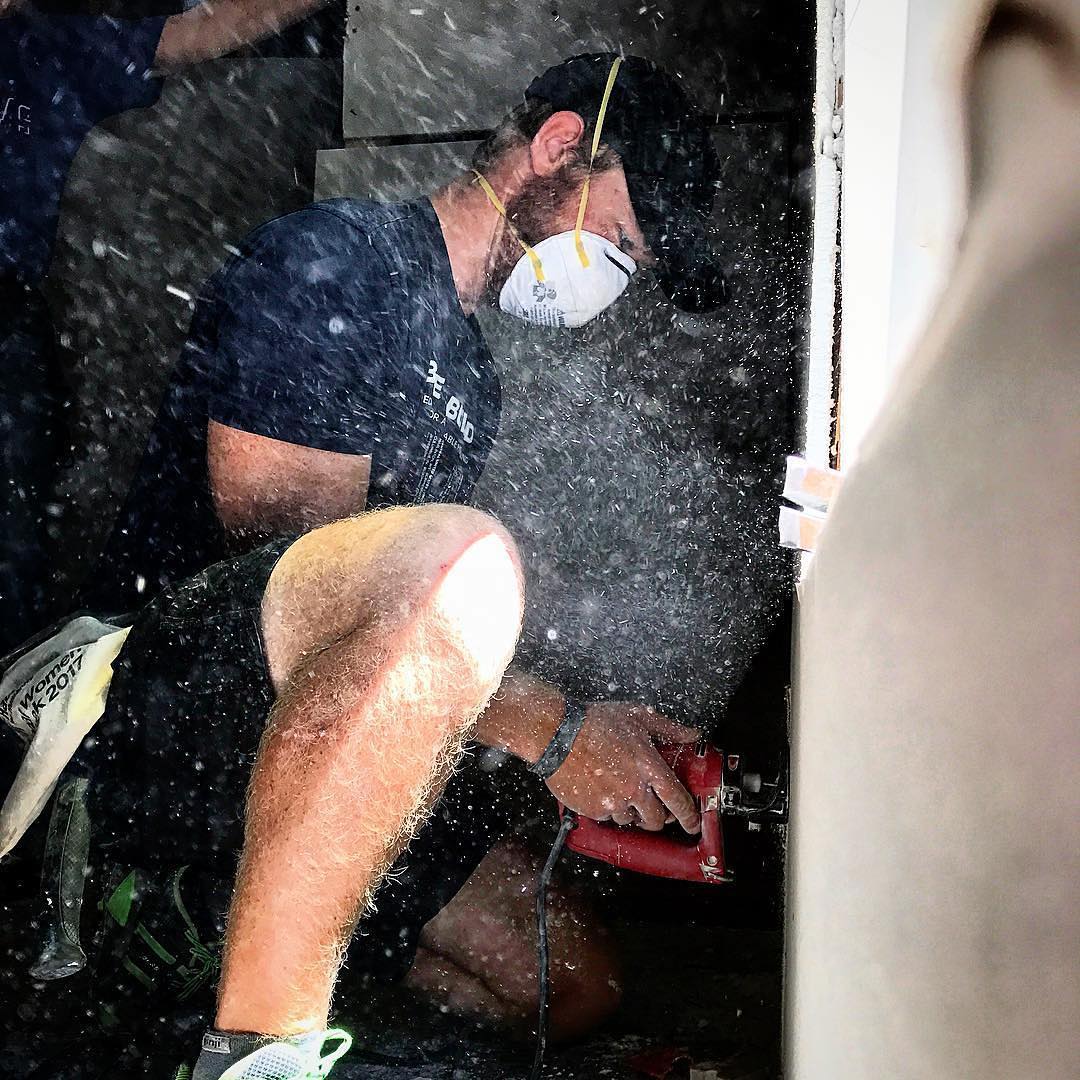Pedaled for Affordable Housing from 2003 to 2023
The Affordable Housing Cause
Before the trip, each rider was expected to spend at least 15 hours volunteering on a build site with a local affordable housing organization. Riders must have also participated in our Affordable Housing Curriculum in addition to the required build hours.
What Is Affordable Housing?
A home is affordable if payments plus taxes and basic utilities do not exceed 30% of a household’s gross income.
Unfortunately, far too many people in the United States do not have the financial means to rent or own a home that is affordable, safe, and durable.
Extremely Low-Income (ELI) individuals and families, whose income as at or below 30% of the median income in their area, often spend over 50% of their incomes on housing. This leaves them with few funds left over for basic nutritional, medical, and educational needs. According to the National Low Income Housing Coalition (NLIHC) 1 out of 4 rental households (11+ million households) in the U.S., fall into this category.
As the federal minimum wage has stagnated at $7.25 since 2009, it is increasingly difficult to keep pace with rising costs. To afford the national Fair Market Rent for a one-bedroom apartment, an individual would need to work 94.5 hours at minimum wage.
Because of rising costs, many families are relegated to homes that are inexpensive but considered physically inadequate. Such homes may lack access to basic utilities (e.g., electricity), or they may include units with structural deficiencies (e.g., handicap inaccessibility, poor insulation, and damaged roofs). These realities impact millions of homes across the country.
The Affordable Housing Curriculum
1. Town Facts
Whether riding or volunteering for one day or eighty days, Bike & Build participants researched the towns and cities through which they rode in order to provide context for the trip. They learned about housing-specific movements and work, while also highlighting the quirks and fun facts in communities large and small.
- Community Rides
- Hubs
- Cross Country
- Regional
- VAAP
- Hubs
- Cross Country
- Regional
- VAAP
2. The Foundation
Bike & Build shares five resources with Participants to provide the context necessary to understand the affordable housing crisis today. These resources (watch, listen, read) introduce terms and concepts relevant to their Bike & Build experience such as “redlining,” “fair market rent,” “housing first,” and others.
3. Interviews
To further contextualize the cause, participants conducted interviews of affordable housing affiliates in their communities prior to their participation in a Bike & Build event. These affiliates could include leaders of local housing nonprofits; government leaders advocating for affordable housing; Community Development Corporations; or others.
- Hubs
- Cross Country
- Regional
- VAAP
- Hubs
- Cross Country
- Regional
- VAAP
4. Small Group Discussions
Understanding all there is to know about affordable housing is no simple task. To help participants start to grasp the issue, they would participate in weekly discussion groups for 6-8 weeks. Each person would take turns in their small groups facilitating discussions with teammates around the multifaceted issue that is affordable housing.
Weeks 1-2: Groups would discuss the history of affordable housing in the United States, the discriminatory practices that created housing inequities along racial lines, and policies in the US that influenced where housing is today.
Weeks 3-4: From there, groups would learn about how housing issues vary across the US; how urban affordable housing differs from rural affordable housing; and what kinds of programs and policies exist to provide housing in these areas.
Weeks 5-6: Groups would then look at the intersectionality of affordable housing with other social justice issues, including LGBTQ+ rights, disability rights, transportation equity, sustainability, and others.
Weeks 7-8: To close out the curriculum, groups would take a more focused look on affordable housing in their communities and who is taking action at a political, nonprofit, and community organizing level.
5. Sweat Equity
The final piece to the Affordable Housing Curriculum is direct service. Participants would spend 15+ hours volunteering with an affordable housing organization in their community prior to their program, gaining insight into the work being done by organizations locally.
- Hubs
- Cross Country
- Regional
Research
These organizations have a wealth of resources on affordable housing:
Volunteer
Find out what is going on in your community. Organizations are always eager for volunteer help. Here’s a few to check out:
Supporting Affordable Housing Since 2003
Between 2003-2019, Bike & Build granted more than $6.7 million to 1,450 affordable housing organizations.
Our Competitive Grant recipients put our support to good use. On average, each grant allowed:
16
135

